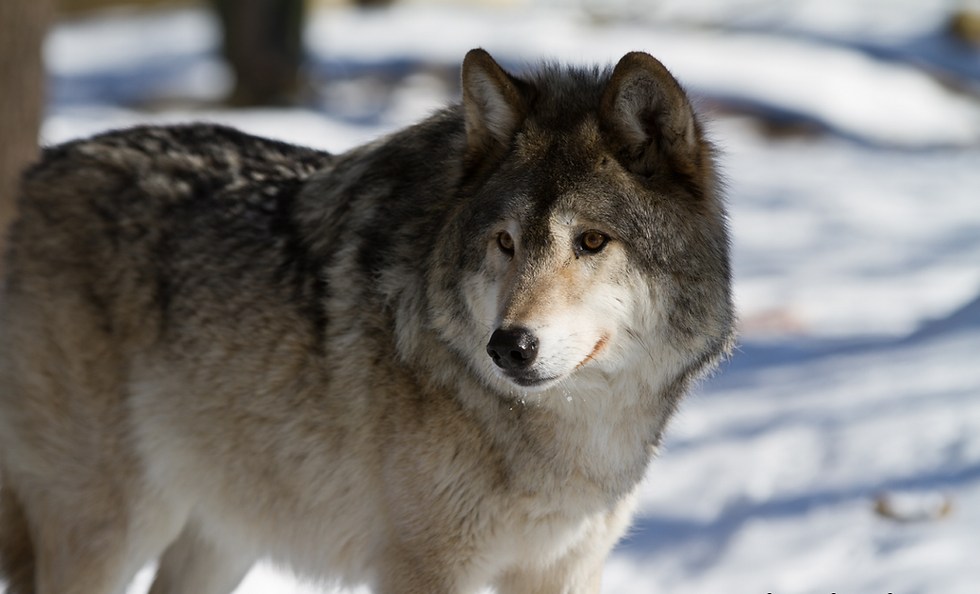
CREATURE-PEDIA
Gray Wolf




In the stillness of the night, a full moon appears, a lone howl echoes across the darkness, this mythical creature has revered and reviled in ancient culture from Asia to the Americas, it’s the wolf. And while it frequently plays the role of the villain, this hunter’s playful personality does not agree with the stories of a solitary, sadistic murderer, but by working together in groups called packs, the wolf remains one of the world’s most perfect predators. The gray wolf known by many names “the Timber wolf, Arctic wolf or Tundra wolf” and it’s one of the most adaptable killers of the planet, found everywhere from the snowy tundra, from the rocky mountains and green forests, wolves are designed to go anywhere and kill anything. Depending on world location, a full grown wolf can weigh anywhere from 44 to 137 pounds with the largest ever recorded being 189 pounds in the snow of Russia, from nose to tail, wolves can be 6 feet long and every inch of it body is use not only for survival, but for hunting. Once prey is found or a rival territory, the gray wolf celebrates with its trademark howl, believe to howl for comradery different pitches and sounds can communicate many things, one howl tell other wolves to meet at specified location, while a second howl warns the wolves you’re entering into another territory and a strong howl can be heard 10 miles away. With a narrow chest and large hind legs, wolves are built for stamina and distance, wolves can run 6 mph for several miles, but can also reach 40 mph during a heated pursuit. Unlike people, wolves are digitigrade meaning they walk on their toes which help them move lightly and quietly, slight webbing between each of their toes helps them tread through snow. And while prey might bumble through on uneven or slippery terrain, the non retractable claws of the wolf give them a firm grip in the ground so they don’t lose their balance. The dowel layer of fur play an important part of the gray wolf’s survival, the coat’s rough outer layer repels water and dirt, while the soft inner coat is water resistance, giving the wolf insulation. Based on where the wolf calls home, its coat can range from snowy white, to midnight black, to many shades in between, whatever it’ll give it the best camouflage. What makes wolves so deadly is that they live and hunt in little communities, packs normally consists of 8 wolves, but some are big as 20, every pack is led by the soul breeding pair known as the “Alpha pair”. Other members help rear the offspring and some wolves known as beta wolves, are biting their time before breaking off to start their packs. When hunting in packs, wolves use their heightened senses to find prey, they primarily hunt by scent possessing over a billion more scent receptors than humans. Wolves can also hear more than twice the sound range of humans and their mobile ears can rotate 180 degrees, which helps them pinpoint exactly where a sound is coming from. Once the wolves found their target, they will break off in mini packs and surround their prey from all sides, equipped with their 4 inch canines each an inch ½ in length, then they bite the legs and upper thighs of the prey. Each bite can leave a 6 inch gash, leaving most prey to bleed to death, wolves are able to eat up to 33 pound of meat per sitting eating 1 ½ tons of meat in a year, attacks on people is not uncommon. However, the main reason wolves have lost their fear of man, it’s because we had continued to build homes on their land, the close contact with humans had made wolves unafraid, which is why hungry wolves have resorted to attack people when food is scarce. Hunting and extermination has made wolves numbers but a fraction of what they once were however, because of recent conservation, wolves are at least concern when discussing endangered species. Currently, there are over 13,000 wolves in the United States, today, reveal wolf packs are the biggest threats facing wolves in the wild, extremely territorial and proud, defending land often leads to death matches. So the next time you hear the gray wolf’s solitary howl, tread carefully because you’re in wolf territory.
Fun Fact
Like all dogs, wolves will travel for long distances by trotting at about five miles per hour.
Fun Fact
Wolves may travel 10 to 30 miles each day in search of food.

